The Lab Redbone Coonhound Mix is a popular hybrid breed that results from the breeding a Labrador Retriever and a Redbone Coonhound.
These dogs are known for their loyalty, intelligence, and hunting instincts. They typically have short fur that requires minimal grooming and are medium to large. However, their high energy level and need for regular exercise and mental stimulation sets them apart from other breeds. The Lab Redbone Coonhound Mix should be on your list when finding the perfect four-legged companion.
Owning a Redbone Coonhound has challenges, including high energy levels and the need for exercise, which requires prospective owners to research before bringing one home. We’ll delve deeper into what makes this lovable hybrid so special. We’ll provide some guidance on where to find a Redbone Coonhound puppy and how to raise them.
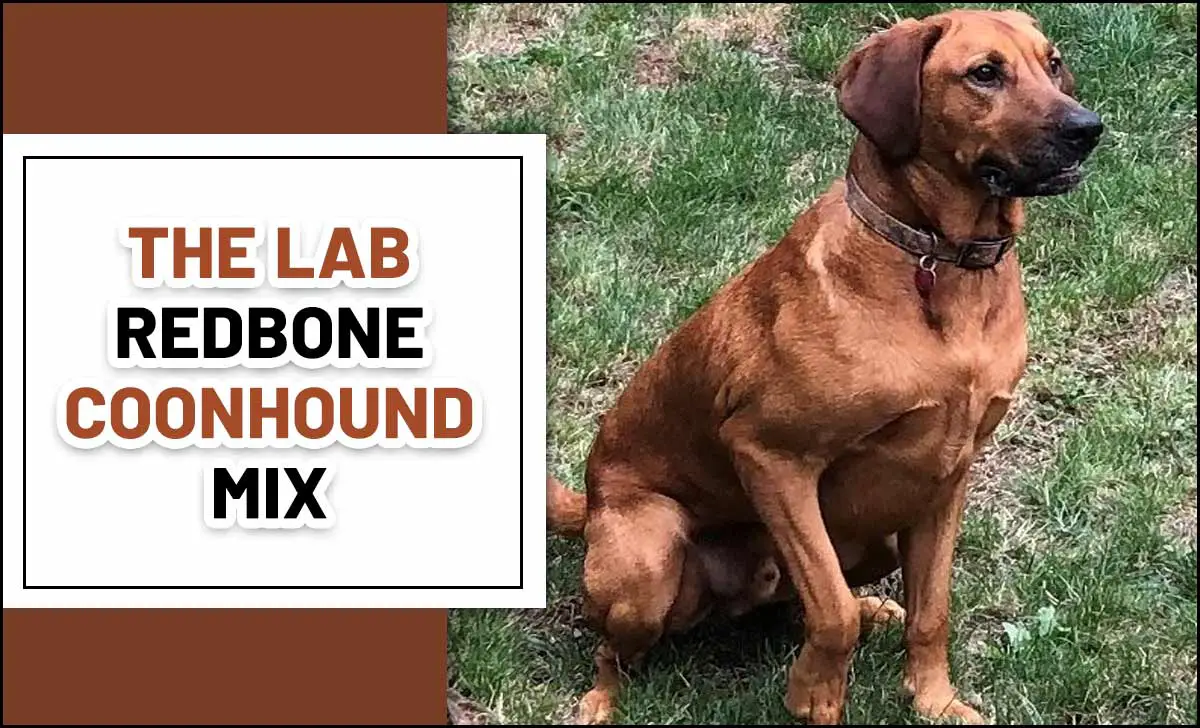
About The Lab Redbone Coonhound Mix
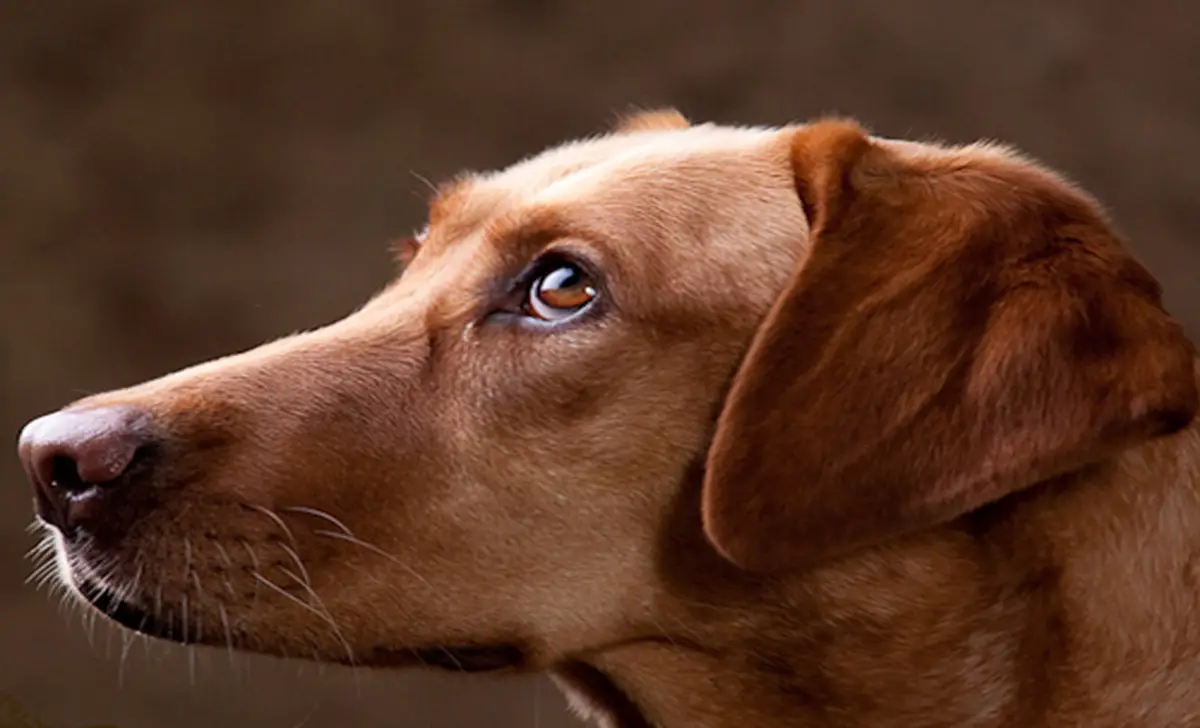
The Redbone Coonhound might be the perfect fit if you’re looking for an active and affectionate companion. Here’s some information about the Lab Redbone Coonhound mix:
|
Characteristic |
Lab Redbone Coonhound Mix |
|
Size |
Medium to large |
|
Weight |
45-80 pounds (20-36 kg) |
|
Height |
20-27 inches (51-69 cm) |
|
Coat |
Short, dense, water-resistant (Lab-like) with some Redbone Coonhound markings |
|
Color |
Typically a solid or mixed color, often with Redbone Coonhound coloring |
|
Temperament |
Friendly, loyal, energetic, intelligent, and affectionate |
|
Exercise Needs |
High; requires regular exercise and mental stimulation |
|
Training |
Moderately easy to train with positive reinforcement |
|
Socialization Needs |
Early socialization is crucial for good behavior |
|
Living Environment |
Ideally suited for homes with access to outdoor space |
|
Common Health Issues |
Can inherit health issues from both parent breeds |
Appearance
The Lab Redbone Coonhound mix typically exhibits a blend of characteristics from both parent breeds. With a sturdy build and a sleek, glossy coat, they often feature the Redbone Coonhound’s signature reddish-brown hue, sometimes accompanied by white markings.
Their eyes are usually soulful and expressive, while their ears may be floppy or semi-erect. They possess an athletic physique, reflecting the Labrador Retriever’s endurance and the Coonhound’s agility. Overall, these mixes boast a charming appearance that merges the best of both worlds.
Personality And Temperament
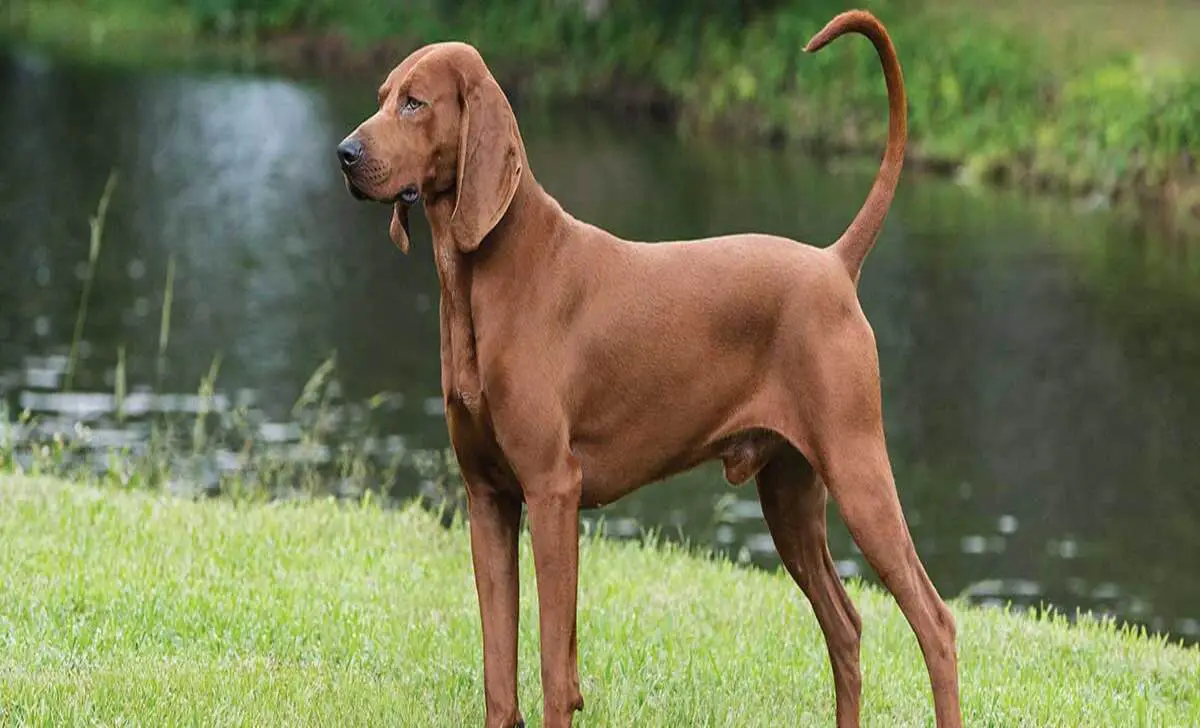
This mix typically inherits traits from both breeds, resulting in a friendly, energetic, and intelligent companion. With a mix of Labrador Retriever’s loyalty and Redbone Coonhound’s hunting instincts, they’re often affectionate with their family and enjoy outdoor activities.
Known for their playful nature, they thrive in active households where they can receive plenty of exercise and mental stimulation. They may exhibit a strong prey drive, requiring early socialization and training to channel their instincts positively. Overall, they make devoted and fun-loving pets for the right owner.
Grooming Needs
Here’s the grooming needs for a Lab Redbone Coonhound mix:
|
Grooming Aspect |
Description |
|
Coat |
Short to medium length, dense double coat. |
|
Shedding |
Moderate shedding year-round may increase seasonally. |
|
Brushing |
Weekly brushing with a slicker brush or rubber curry brush to remove loose hair and debris. |
|
Bathing |
Occasional baths as needed, typically every 1-2 months, to keep the coat clean and odour-free. |
|
Ear Cleaning |
Weekly ear checks and cleaning with a vet-approved solution to prevent infections. |
|
Nail Trimming |
Monthly nail trims to keep nails at a comfortable length, avoiding overgrowth and discomfort. |
|
Dental Care |
Brush daily with dog-friendly toothpaste to prevent dental issues and maintain oral hygiene. |
|
Coat Maintenance |
Regular checks for mats, tangles, and burrs, especially after outdoor activities. |
|
Professional Grooming |
Optional, but may benefit from occasional professional grooming for coat trimming and overall maintenance. |
Exercise Requirements

Daily Exercise Needs:
- Duration: 1 to 2 hours of exercise daily
Types Of Activities:
- Walking/Jogging: At least 30 to 60 minutes
- Playtime: Interactive games like fetch or tug-of-war
- Mental Stimulation: Puzzle toys, obedience training sessions
- Off-leash Activities: In a safe, enclosed area to satisfy their scent-tracking instincts
Additional Tips:
- Variety: Mix physical and mental exercises to prevent boredom
- Socialization: Include dog parks or playdates to ensure social interaction
Training Your Unique Breed
Training your unique Lab Redbone Coonhound mix requires patience and consistency. Start with basic commands like sit, stay, and come, using positive reinforcement techniques such as treats and praise. Due to their intelligence and energy, engage them in regular mental and physical exercise to prevent boredom and destructive behaviors.
Socialize them early to ensure they are comfortable around people and other pets. Your Lab Redbone Coonhound mix will become a well-behaved and loyal companion with proper training and love.
Feeding Needs
- Balanced Diet: Provide a balanced diet of protein, carbohydrates, fats, vitamins, and minerals.
- Protein: Ensure the diet includes high-quality protein sources to support muscle development and overall health.
- Portion Control: Monitor portion sizes to prevent obesity, especially since Labrador Retrievers and Redbone Coonhounds can be prone to overeating.
- Regular Feeding Schedule: Establish a consistent feeding schedule to regulate digestion and prevent gastrointestinal issues.
- Fresh Water: Always provide access to fresh, clean water to keep your dog hydrated.
Sample Feeding Table:
|
Age (Months) |
Daily Portion (Cups) |
Feeding Frequency |
|
2-3 |
1-2 |
3-4 times a day |
|
4-6 |
2-3 |
2-3 times a day |
|
7-12 |
3-4 |
2 times a day |
|
12+ |
3-4 |
1-2 times a day |
Note: Adjust portions based on your dog’s activity level, metabolism, and overall health. Monitor weight and adjust portions accordingly. Consult your veterinarian for personalized feeding recommendations.
Health Issues To Look Out For In This Breed
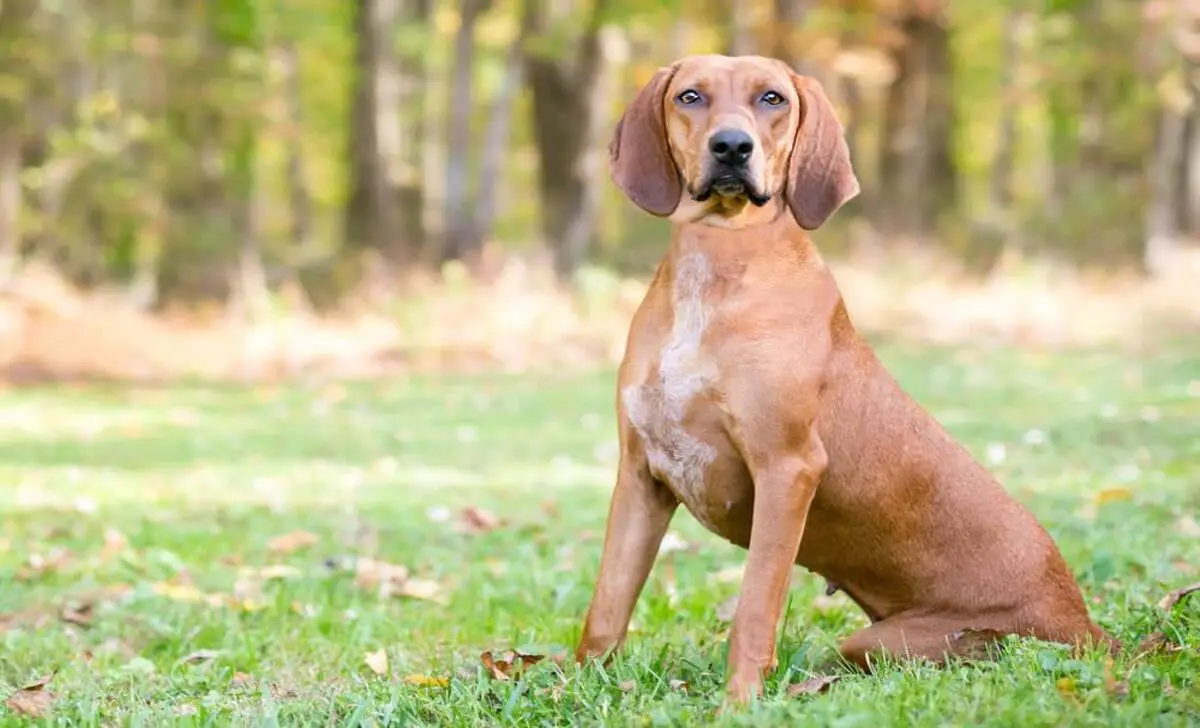
This mix could be susceptible to these conditions and develop skin allergies and joint problems. Regular veterinary check-ups, a balanced diet, exercise, and proper grooming can help mitigate potential health issues in this hybrid breed. Here are some:
- Hip dysplasia
- Bloat (Gastric Dilatation Volvulus)
- Progressive Retinal Atrophy
- Eye problems
- Ear infections
- Skin allergies
- Obesity
- Hypothyroidism
- Heart conditions
Finding And Raising A Mix Breed Puppy
Finding one can involve searching local shelters, rescue organizations, or online platforms. When raising this mix, provide plenty of mental and physical stimulation through walks, runs, and puzzle toys. Consistent training and socialization are crucial for a well-rounded pet. A balanced diet and regular veterinary care should also be ensured to keep them healthy and happy.
What Are The Best Ways To Address Aggression In A Redbone Coonhound Mix?
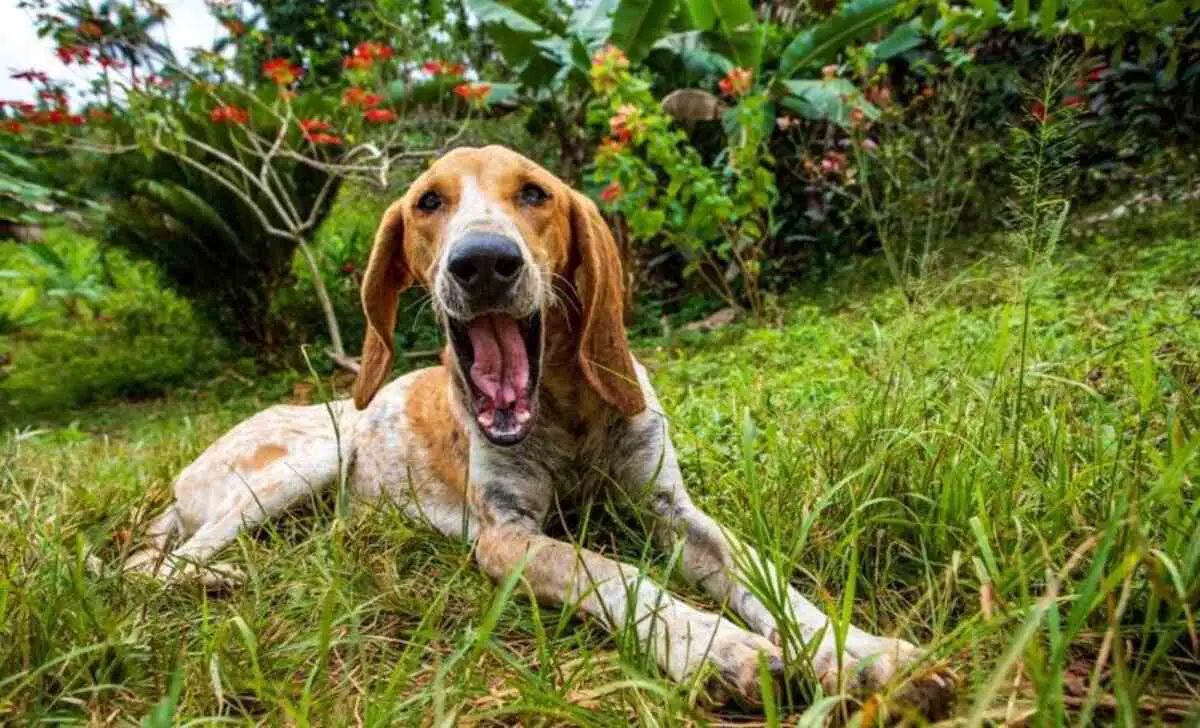
Addressing aggression in a Redbone Coonhound mix requires a comprehensive approach to understanding the underlying causes and implementing appropriate behavior modification techniques. Here are some effective strategies:
- Identify Triggers: Determine what triggers the aggressive behavior and work to avoid or manage those situations.
- Positive Reinforcement: Use positive reinforcement techniques to reward calm and non-aggressive behavior, encouraging desirable actions.
- Training and Socialization: Invest in obedience training and socialization to teach the dog appropriate behaviors and how to interact positively with other dogs and people.
- Consult a Professional: Seek guidance from a certified dog trainer or behaviorist experienced in dealing with aggression issues to develop a tailored training plan.
- Provide Mental Stimulation: Engage the dog in mentally stimulating activities, such as puzzle toys or nose work, to redirect their focus and energy.
- Consistency and Patience: Be consistent in your training efforts and patient with progress, as addressing aggression takes time and effort.
- Medical Evaluation: Consult a veterinarian to rule out any underlying medical issues contributing to the aggression.
What Are The Best Ways To Bond With A Redbone Coonhound Mix?
Bonding with a Redbone Coonhound mix can be a rewarding experience. Here are some effective ways to strengthen your bond with your canine companion:
- Quality Time: Spend dedicated one-on-one time with your dog through walks, playtime, and training sessions.
- Positive Reinforcement: Use treats, praise, and affection to reinforce good behavior and create positive associations with you.
- Training and Enrichment: Engage your dog in training exercises and provide mental stimulation through puzzle toys and interactive games.
- Exploration Together: Take your dog on adventures to new places like parks, trails, or dog-friendly events to build shared experiences.
- Grooming and Care: Regular grooming sessions, such as brushing or bathing, can be bonding opportunities that strengthen your connection.
- Communication: Learn to understand your dog’s body language and vocal cues and respond appropriately to their needs and emotions.
- Respect and Trust: Build a foundation of mutual respect and trust by being consistent, patient, and understanding.
What Are The Differences Between A Redbone Coonhound Mix And A Purebred Redbone Coonhound?
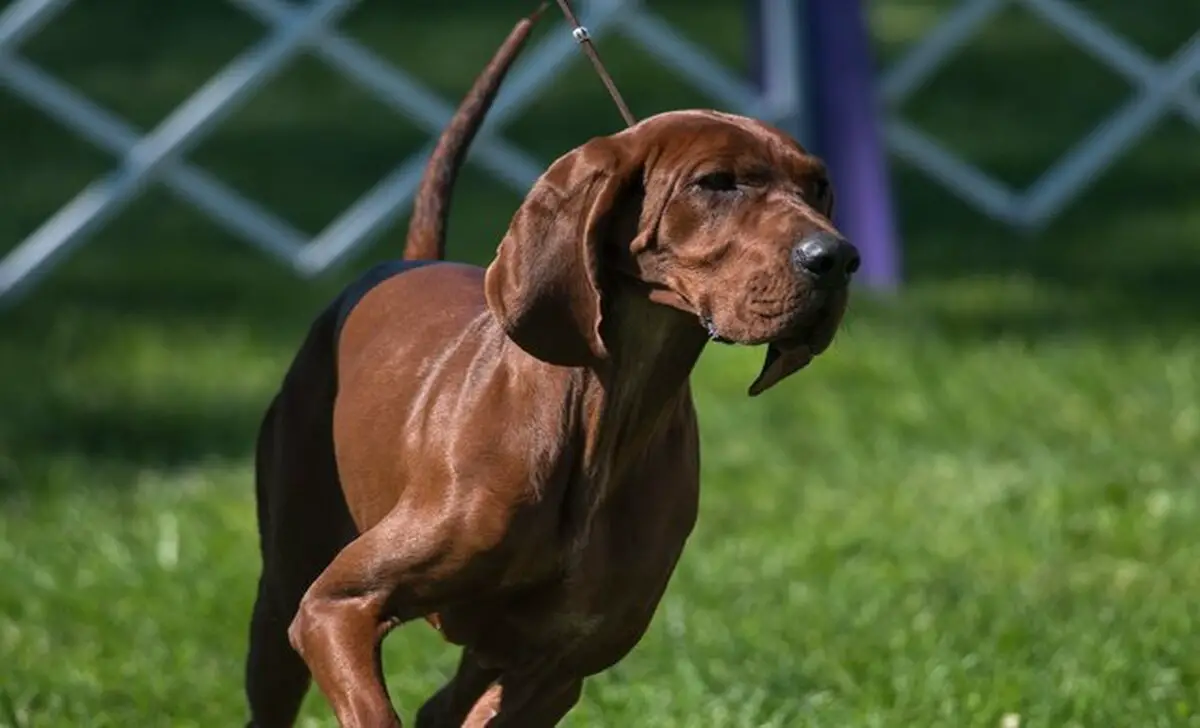
The differences between a Redbone Coonhound mix and a purebred Redbone Coonhound primarily lie in their genetic makeup and potential characteristics. Here’s a comparison:
- Genetic Variation: A Redbone Coonhound mix combines Redbone Coonhound and one or more other breeds, resulting in a dog with a mixed genetic background. In contrast, a purebred Redbone Coonhound has a lineage consisting solely of Redbone Coonhounds, maintaining breed-specific traits.
- Appearance: While both may share some physical traits, such as the distinctive red coat, floppy ears, and muscular build, a mix may exhibit a wider range of appearances depending on the breeds involved in the cross.
- Temperament: The temperament of a Redbone Coonhound mix can vary widely depending on the other breed(s) in the mix, whereas purebred Redbone Coonhounds typically exhibit predictable temperament traits associated with the breed, such as being friendly, sociable, and energetic.
- Health and Longevity: Purebred dogs often have predictable health traits and may be more prone to breed-specific health issues. Mixed-breed dogs, on the other hand, may benefit from hybrid vigor and potentially have a lower risk of inherited health problems.
- Purpose: While mixes and purebreds can make excellent companions, purebred Redbone Coonhounds may be preferred for specific tasks such as hunting or competitive events due to their predictable traits and lineage.
While both types of dogs can be wonderful pets, the differences between a Redbone Coonhound mix and a purebred Redbone Coonhound lie in their genetic diversity, appearance, temperament, and potential health considerations.
What Are The Best Toys For A Redbone Coonhound Mix?
The best toys for a Redbone Coonhound mix cater to their natural instincts and provide mental and physical stimulation. Here are some toy options that are well-suited for a Redbone Coonhound mix:
- Interactive Puzzle Toys: Toys that dispense treats or require the dog to solve a puzzle to access a reward can keep them mentally engaged and entertained.
- Chew Toys: Durable chew toys, such as Kong toys or nylon bones, can satisfy your dog’s natural urge to chew while promoting dental health.
- Fetch Toys: Balls, Frisbees, or other fetch toys are excellent for outdoor play and help burn off excess energy.
- Squeaky Toys: Toys that make noise can appeal to your dog’s hunting instincts and provide hours of entertainment.
- Tug Toys: Tug-of-war toys are great for interactive play and can strengthen the bond between you and your dog.
- Plush Toys: Soft and cuddly plush toys can provide comfort and companionship for your dog, especially during quiet times.
- Water Toys: If your Redbone Coonhound mix enjoys water, consider water toys like floating toys or water fetch toys for fun in the pool or lake.
What Are The Best Ways To Prevent Separation Anxiety In A Redbone Coonhound Mix?
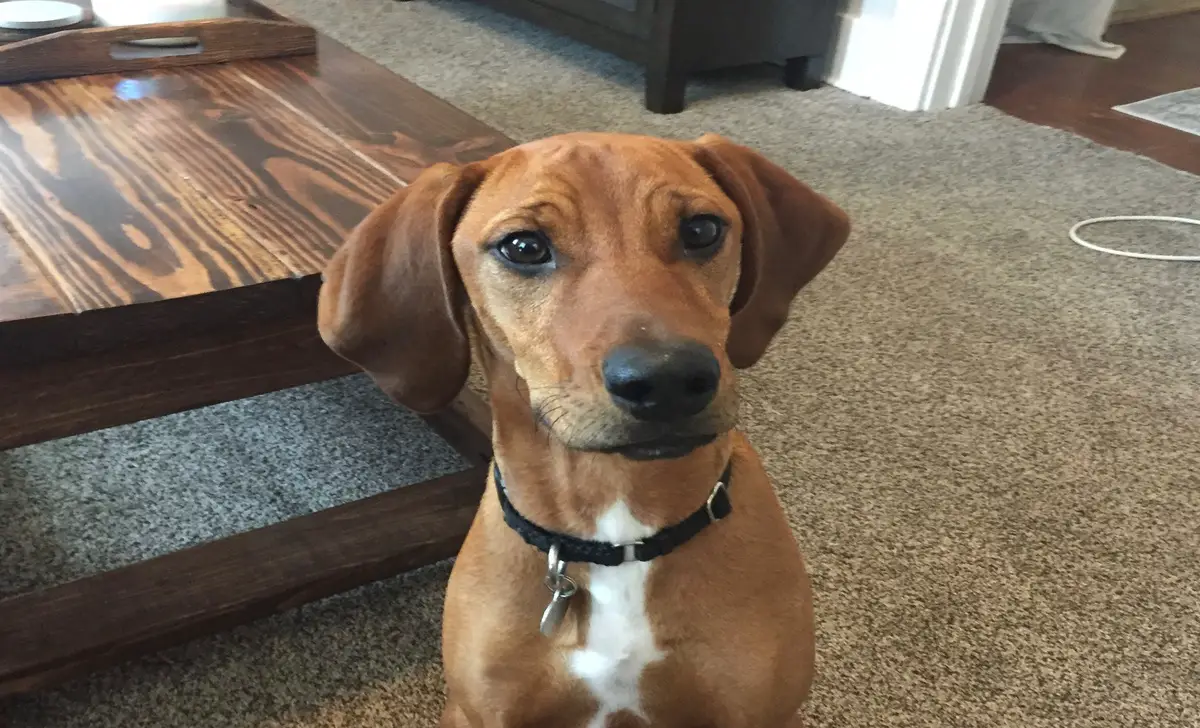
Preventing separation anxiety in a Redbone Coonhound mix, whether a new puppy or an older dog, involves several strategies:
- Gradual Departures: Start by leaving the dog alone for short periods and gradually increasing the duration to help them adjust to being alone.
- Crate Training: Introduce crate training early on, providing a safe and comfortable space for the dog when left alone.
- Exercise and Mental Stimulation: Ensure the dog receives plenty of physical and mental stimulation to keep them occupied and reduce anxiety.
- Desensitization: Practice desensitization techniques by leaving and returning multiple times throughout the day, gradually increasing the intervals.
- Routine: Establish a consistent routine for feeding, exercise, and alone time to provide structure and predictability.
- Avoid Reinforcing Anxiety: Avoid making a big fuss when leaving or returning home, as this can reinforce anxious behavior.
- Professional Help: Seek guidance from a professional dog trainer or behaviorist if the dog’s separation anxiety persists despite your efforts.
Conclusion
The Lab Redbone Coonhound Mix is a lovable and loyal breed that makes for an excellent family pet. Understanding their unique needs and characteristics is essential to raising them as best as possible. From grooming to exercise, training, and feeding, there are various aspects to consider when caring for your furry friend.
Finding a reputable breeder or adoption agency is crucial if you’re considering adopting a Redbone Coonhound puppy. The Redbone Coonhound is a lovable and friendly hybrid that can make a great addition to any family. Following these tips and guidelines, you can enjoy many years of love and companionship with your loyal and lovable Redbone Coonhound.
Frequently Asked Questions
1.Are Redbone Coonhounds Good House Dogs?
Redbone Coonhounds can make good house dogs with proper training and socialization. Their friendly nature and sociable disposition make them well-suited for family life. While they have a strong hunting instinct, consistent dog training can help manage their behavior and ensure they adapt well to indoor living.
2.What Does A Black Lab Coonhound Mix Look Like?
A Black Lab Coonhound mix typically inherits characteristics from both parent breeds. They may have the sturdy build and black coat of a Labrador Retriever, combined with the distinctively shaped ears and hound-like features of a Coonhound.
Their appearance can vary widely depending on the traits they inherit from each parent, but they often exhibit a blend of qualities that contribute to their unique appearance.
3.What Are The Best Activities For A Redbone Coonhound Mix?
Redbone Coonhound mixes are intelligent, active dogs that thrive on physical exercise and mental stimulation. Their best activities include long walks, hikes, runs, agility training, scent work, and interactive games like fetch or hide-and-seek. Engaging their keen sense of smell through tracking exercises or puzzle toys can also provide great mental stimulation.
4.How Big Does A Redbone Coonhound Mix Get?
A redbone coonhound mix typically grows to be a medium to large-sized dog, ranging from 45 to 70 pounds and standing 21 to 27 inches tall at the shoulder. Size can vary depending on the dog’s mix of breeds. It’s always best to consult a veterinarian to determine the potential size of a specific redbone coonhound mix.
5.What Are The Drawbacks Of Having A Redbone Coonhound?
Redbone Coonhounds are known to be quite vocal and have a strong prey drive, which can make them prone to wandering off if not properly trained or contained. They require regular exercise and mental stimulation to prevent boredom, which can lead to destructive behaviors.
6.What Is The Lifespan Of A Redbone Coonhound Mix?
The lifespan of a redbone coonhound mix typically ranges from 10 to 15 years, depending on various factors such as genetics, diet, exercise, and overall health maintenance. Regular veterinary check-ups and a healthy lifestyle can help ensure a longer lifespan for your furry friend.
